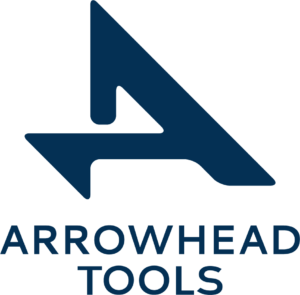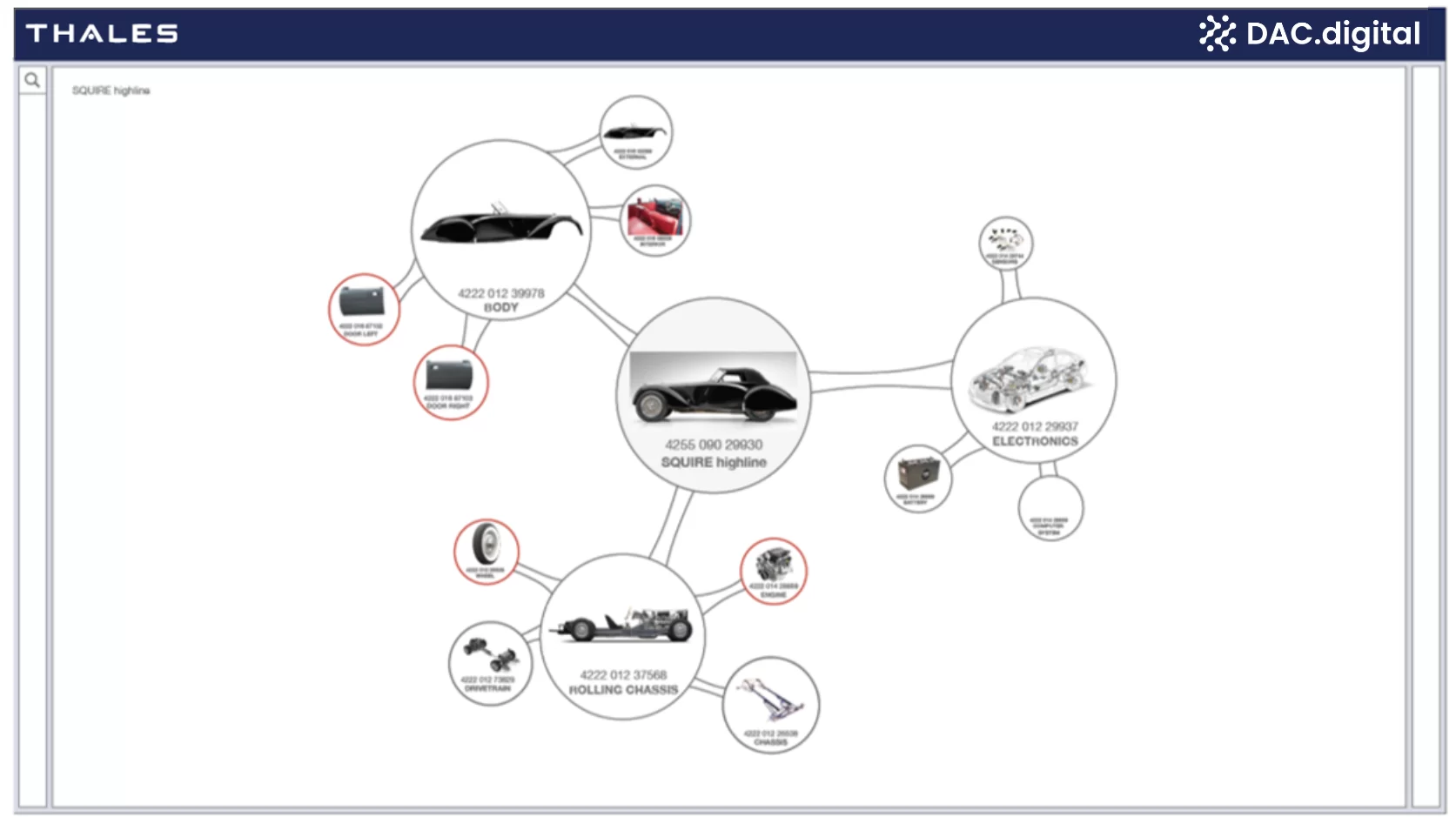DigiTrac – Digital Product Footprint Tracking System

Client.
Thales
Problem.
Thales products comprise many components that the company buys from a large variety of partners. The goal was to develop a platform that stores all documentation of components, suppliers of individual components and replacements. The company was looking for a partner that has experience in the development of enterprise architecture. There were 3 main goals for the project implementation:
- R&D, which was supposed to help in the choice of technology,
- Proof of concept activities,
- Development of Product Lifecycle Management.
Solution.
The general concept of the DPF is the following: for every business process that handles product-related data, the DPF offers an access point (interface) for a human in charge of this business process. The product-centric DPF interface enables that human user to accomplish the necessary data-handling tasks if needed, reaching across the private data structures of different companies that are part of the supply network for that product. DPF provides a separate user interface for every processes or sub-process, which allows for a separation of concerns and provides a security measure. DPF architecture distinguishes between two types of companies in the supply network for a product: the OEM company, which is the company that owns the product that is the central object of the supply network, and the Manufacturer(s) companies that are the suppliers of parts for that product.
Process.
The first phase consisted of collecting the requirements, which was the responsibility of the Thales team. For this purpose, we talked with product-owners, procurement, SCM, and change management. The set of requirements was then discussed with the DAC to make the functional requirements.
The next stage is the analysis of available technologies, research and the first proof of concepts. Architecture development and selection of technological stack.
In the next stage, the time came for the development and testing of a developed solution. DAC developed an architecture to integrate cloud solutions, in which PLM partner systems were embedded. One of the assumptions was to use Arrowhead Framework, currently curated by Eclipse Foundation, Industrial IoT automation, and interoperability framework.
We are currently developing a Whitepaper in collaboration with DAC scientists and engineers to promote this innovative approach. The Whitepaper should be available in late 2019 and early 2020. We will present the solution at industry 4.0 conferences and trade fairs.
Delivered value.

The main goal has been achieved: a working prototype that demonstrates the performance of Product Lifecycle Management. The development of a functional demonstrator was crucial for the further development of the project.
The DPF in Budapest at the Productive 4.0 conference related to Industry 4.0, digital production, etc., where the domain experts had the opportunity to review and give feedback on our tool.
Used Technologies.

A data-space-enabled collaborative product life cycle and supply chain management. Developed in cooperation with Thales, Digital Product Footprint integrates distributed PLM systems, operated by different parties in a multi-stakeholder ecosystem, to furnish visibility of product and component dependencies across the value chain. By encompassing all data items relevant for managing all aspects of a product, DPF supports the bidding process, product configuration, and change management.

DigiTrac is a system built on the concept of Digital Product Footprint (DPF) developed by the engineers at DAC.digital in collaboration with THALES, Netherlands. It is based on three core viewpoints: a product-centric, a business process-centric, and an end user-centric approach to product management, i.e., it considers business processes and the people in charge of them to be the essential parts of product management.
The DPF may be seen and explored using the system. It provides a graph description of all the pieces used to build an item (for example, a car) together with all the information such as the original manufacturer, manufacturing date, maintenance, repair history, and so on. It is already being used in the transportation industry.
DigiTrac is a functioning prototype that exhibits the effectiveness of Product Lifecycle Management and can be customised for use in various industries. DigiTrac was showcased at the Productive 4.0 Industry 4.0 conference, receiving an excellent response.
State of the art.
The concept of a Digital Product Footprint is the result of a problem-solving process in which the management of a product, as a primary business process for a product owner (who is not a customer/owner), is revisited because existing solutions in terms of process descriptions and underlying tools and methods have eroded and become less performant because of the following trends: Digital Transformation, Smart Industry, Smart Industry++, Realisation of Industrial Internet of Things.
As a result of adopting the view that the creation and use of a man-made product must be trackable and traceable, in all required detail, via data in the digital domain (or the virtual world of digital data, or however you want to describe it), we face the challenge of defining and implementing an all-inclusive set of digital data items that together and in part describe all aspects of a product over its entire lifecycle (i.e. from its conception to its decommissioning and destruction).

Thales products are made up of several components that the firm obtains from a wide range of suppliers. The purpose was to create a platform that keeps all component documentation, providers of individual components, and replacements. The organisation searched for a partner with experience in enterprise architecture development; this is where DAC.digital came in to expand the state-of-the-art.

Problem.
Thales products comprise many components that the company buys from a large variety of partners. The goal was to develop a platform that stores all documentation of components, suppliers of individual components and replacements. The company was looking for a partner that has experience in the development of enterprise architecture. There were 3 main goals for the project implementation:
R&D, which was supposed to help in the choice of technology
Proof of concept activities
Development of Product Lifecycle Management
The Solution: How does it work?
The DPF’s main principle is as follows: for any business process that handles product-related data, the DPF provides an access point (interface) for a human in charge of that business process. The product-centric DPF interface lets that human user do the essential data-handling operations, reaching across the proprietary data structures of multiple organisations that are part of the product’s supply network. DPF offers a different user interface for each process or sub-process, allowing for concern separation and security.

DigiTrac, facilitated by Data Space, enables a collaborative product life cycle and supply chain management. It connects distributed PLM systems run by many parties in a multi-stakeholder ecosystem to provide visibility of product and component interdependence across the value chain. DPF helps the bidding process, product configuration, and change management by incorporating all data items necessary to control all elements of a product.
DigiTrac provides access to an anonymised representation of an existing complex product involving a multi-stakeholder supply network and spanning as many lifecycle phases as possible, supplemented with other data items to cover another business process involved in DPF management, namely the Logistics process. As a result, the DPF will enable access to a wide range of data items, including design data (software, hardware, and mechanical parts), manufacturing data, supplier data, supply and logistics process and network data, and data on the product’s operating performance, maintenance, and support. This product’s change processes will comprise a variety of small and significant effect events, such as a mid-life update, ownership change, export limitations, obsolescence management, and supply network changes.

Estimate your project.


